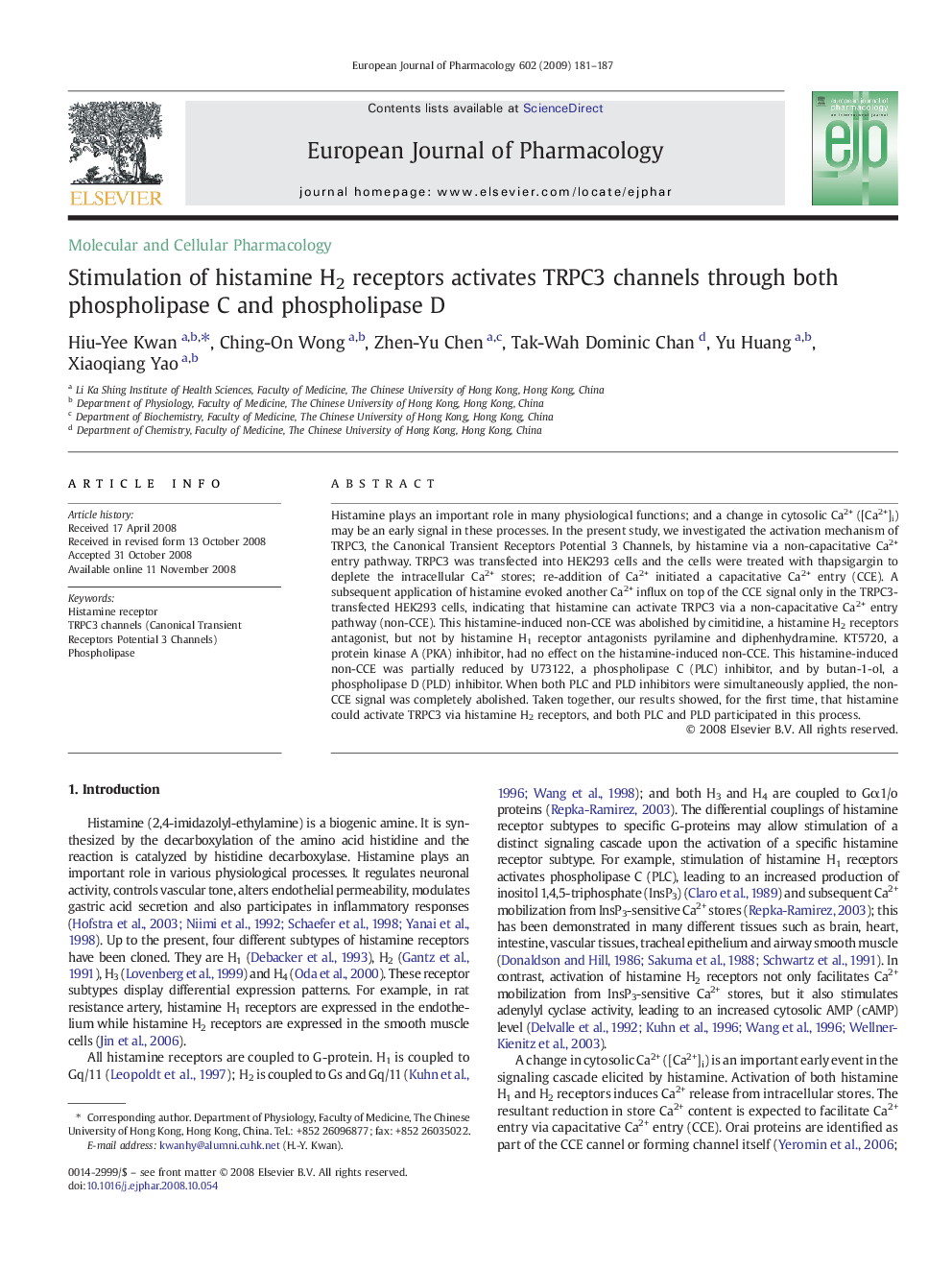| Article ID | Journal | Published Year | Pages | File Type |
|---|---|---|---|---|
| 2534497 | European Journal of Pharmacology | 2009 | 7 Pages |
Histamine plays an important role in many physiological functions; and a change in cytosolic Ca2+ ([Ca2+]i) may be an early signal in these processes. In the present study, we investigated the activation mechanism of TRPC3, the Canonical Transient Receptors Potential 3 Channels, by histamine via a non-capacitative Ca2+ entry pathway. TRPC3 was transfected into HEK293 cells and the cells were treated with thapsigargin to deplete the intracellular Ca2+ stores; re-addition of Ca2+ initiated a capacitative Ca2+ entry (CCE). A subsequent application of histamine evoked another Ca2+ influx on top of the CCE signal only in the TRPC3-transfected HEK293 cells, indicating that histamine can activate TRPC3 via a non-capacitative Ca2+ entry pathway (non-CCE). This histamine-induced non-CCE was abolished by cimitidine, a histamine H2 receptors antagonist, but not by histamine H1 receptor antagonists pyrilamine and diphenhydramine. KT5720, a protein kinase A (PKA) inhibitor, had no effect on the histamine-induced non-CCE. This histamine-induced non-CCE was partially reduced by U73122, a phospholipase C (PLC) inhibitor, and by butan-1-ol, a phospholipase D (PLD) inhibitor. When both PLC and PLD inhibitors were simultaneously applied, the non-CCE signal was completely abolished. Taken together, our results showed, for the first time, that histamine could activate TRPC3 via histamine H2 receptors, and both PLC and PLD participated in this process.
